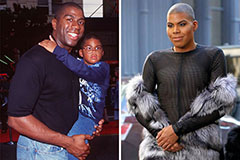The WWF Championship Belts hold a distinct and storied area in the record of expert fumbling. Greater than mere devices, these substantial icons of success represent the peak of accomplishment, the conclusion of blood, sweat, and rips dropped within the squared circle. For decades, the sight of a wrestler hoisting a dazzling WWF (later copyright) champion belt above their head has been an renowned photo, promptly well-known even to those with only a passing experience with the sport. These belts are not simply prizes; they are physical manifestations of storylines, legacies, and the ever-evolving landscape of specialist fumbling.
The history of WWF Championship Belts is as rich and dynamic as the business itself. From the early days of the World Wide Wrestling Federation (WWWF) and its inaugural champion, the lineage of these titles informs a compelling story of fumbling's growth and transformation. The initial WWWF Champion, held by the famous Buddy Rogers, was a reasonably basic layout, a unlike the sophisticated and typically tailored belts these days. Yet, it laid the structure for a practice of symbolic hardware that would pertain to define wrestling excellence.
As the WWWF transitioned into the WWF under Vince McMahon Sr. and later on his kid, Vince K. McMahon Jr., the championship belts developed in tandem with the company's burgeoning popularity. The " Large Eagle" belt, synonymous with the Hulkamania period, became an quickly recognizable symbol of fumbling's mainstream breakthrough in the 1980s. Its big, magnificent eagle style, usually draped over the broad shoulders of Hunk Hogan, epitomized the epic individualities and booming popularity of the moment. This age sealed the championship belt as a important narration gadget, a graph of supremacy and the utmost reward that every wrestler aspired to acquire.
The 1990s ushered in a new age for the WWF, noted by a change in wrestling style and the appearance of brand-new superstars. This period also saw the intro of brand-new WWF Championship Belts, showing the changing aesthetic and the personalities holding them. The "Winged Eagle" belt, with its more elaborate style including several plates and a popular winged eagle, became the sign of champs like Bret Hart, Shawn Michaels, and Stone Cold Steve Austin. This style is frequently considered among the most iconic and precious in wrestling background, standing for a golden age for the company and its top title.
The Mindset Age, a period of edgier stories and rebellious characters, brought with it even more evolution in the layout of the WWF Champion Belts. While the "Winged Eagle" stayed for a while, the development of the " Cigarette smoking Head" belt, particularly designed for Stone Cold Steve Austin, marked a departure from custom. This one-of-a-kind belt, including a head with smoke emanating from its eye outlets, emphasized the defiant and anti-establishment character of among wrestling's greatest celebrities. It showed the business's desire to personalize the champion to fit the personality, further boosting the storytelling possibility of the title.
The turn of the millennium and the eventual rebranding of the WWF to copyright saw additionally models of the championship belts. The "Undisputed Championship" period, complying with the procurement of copyright, presented a brand-new style that unified the WWF and copyright World Heavyweight Championships. This belt, while at first representing a unification, ultimately paved the way to the "Spinner" belt, famously related to John Cena. This controversial design, featuring a large copyright logo design that could spin, was both admired and slammed for its showy and unconventional look. Regardless of opinion, it became synonymous with Cena's dominant power and the period he defined.
Beyond the main globe champion, the WWF Champion Belts encompass a series of titles, each standing for a various level of success and expertise within the company. The Intercontinental Champion, typically taken into consideration the "workhorse" title, has a long and respected background, held by numerous future globe champions. 1 Its numerous styles throughout the years have actually mirrored its importance as a tipping rock to the main event. Likewise, the USA Champion (initially a copyright title brought over after the purchase), the Tag Team Championships (with their numerous and usually aesthetically distinct layouts representing the unity of a team), the Female's Champions ( progressing via numerous styles mirroring the growing prestige of females's fumbling), and the various "hardcore" and "European" titles ( however now defunct) all contribute to the abundant tapestry of WWF/copyright championship background.
1.
The prestigious background of the Intercontinental Champion: copyright, Aug. 12, 2022.
www.youtube.com.
The style and building and construction of WWF Championship Belts are considerable facets of their allure. Typically crafted from metal plates (typically zinc or brass) and natural leather straps, these belts are substantial symbols of prestige and workmanship. The elaborate describing on the plates, featuring business logo designs, eagles, globes, and various other symbolic imagery, contributes to their aesthetic charm and historical relevance. The weight and feel of a wwf championship belts champion belt are often defined by wrestlers as including in the sense of success and legitimacy associated with holding it.
The heritage of WWF Champion Belts prolongs far beyond the wrestling ring. They have come to be social symbols, showing up in films, television programs, and video games. Replicas of these belts are extremely demanded by fans, working as concrete tips of their preferred wrestlers and memorable periods. The image of a champion happily displaying their belt is deeply ingrained in pop culture, standing for victory and achievement in a more comprehensive sense.
To conclude, the WWF Champion Belts are even more than simply ornamental devices. They are powerful signs of battling history, representing the victories and adversities of plenty of professional athletes who have pursued success within the made even circle. From the simple designs of the very early days to the intricate and tailored belts of the contemporary era, these titles have evolved along with the business, mirroring its changing landscape and the epic personalities that have actually held them. The legacy of these belts continues to withstand, fascinating fans and solidifying their place as iconic icons of specialist wrestling excellence.
 Ben Savage Then & Now!
Ben Savage Then & Now! Erik von Detten Then & Now!
Erik von Detten Then & Now! Earvin Johnson III Then & Now!
Earvin Johnson III Then & Now! Robbie Rist Then & Now!
Robbie Rist Then & Now! Ricky Schroder Then & Now!
Ricky Schroder Then & Now!